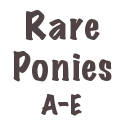 Ponies have long been a big part of agricultural communities because they don’t eat too much and they tend to be hardy and strong.
Ponies have long been a big part of agricultural communities because they don’t eat too much and they tend to be hardy and strong.
Over the years our need for animals has changed considerably. Now we breed them for specific traits, many of which are more suited for the show ring than they are for the family farm.
The first in a series, this installment is dedicated to the Chincoteague Ponies all the way to the Exmoor pony.
Breeds You Don’t See Everyday

Build – Large ponies that tend to vary physically because there has never been a breed standard.
Nature – Very hardy and able to eat almost anything to survive. They are easy to care for and willing partners.
Colors – Found in most colors and patterns, pinto being the most prevalent.
Origin – Descendants of the wild horses on Assateague Island off the east coast of the U.S. These animals are technically feral, because they were once domesticated and were then allowed to run wild. Now there are two working herds and they are limited to a specific number.
More information – Chincoteague Pony
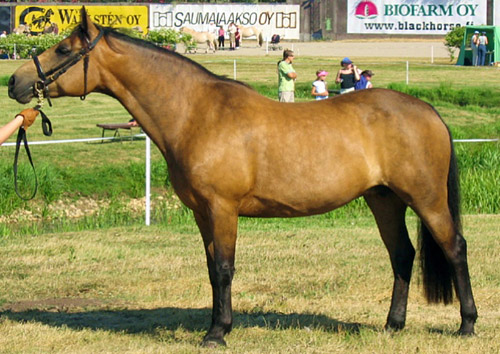
Build – Sturdy ponies who possess a compact body and a broad chest with well rounded hindquarters and tough feet.
Nature – Sure footed and agile they are strong and versatile with a gentle nature.
Colors – Grey, bay, chestnut, dun, roan, black and palomino. Piebalds and skewbalds are not eligible for registration.
Origin – Considered Ireland’s only native breed of horse and were brought to Ireland via the Ancient Celts and have been bred there since the 16th century.
More information – Connemara Pony

Build – Famous for their fantastic feet. Legs are long and straight, head is neat and refined, muscular neck and sloping shoulder.
Nature – Intelligent and brave, yet calm and docile.
Colors – Predominately black, but can be found in bay, grey, chestnut and sometimes roan.
Origin – Native to north east England, this pony was bred specifically as a pack pony and dates back to the late 17th century. It’s bloodlines contain that of the Scotch Galloway combined with animals native to the area.
More information – Dales Pony
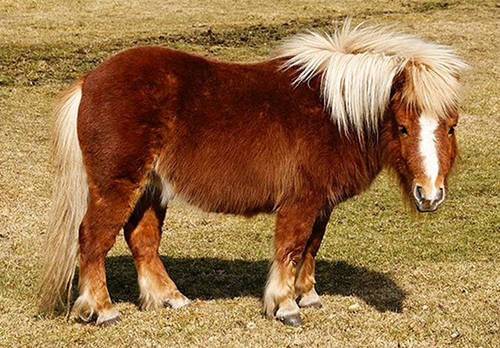
Build – Small head and ears with large eyes, sloping shoulder, medium back, deep girth, muscular hindquarters and legs.
Nature – Honest and curious, these ponies are intelligent and hardworking.
Colors – Black, bay, chestnut, grey, and roan. Piebalds and skewbalds cannot be registered.
Origin – Documentation of this breed dates back to the 11th century. These ponies have been living on Dartmoor keeping an ecological balance of sorts there.
More information – Dartmoor Pony
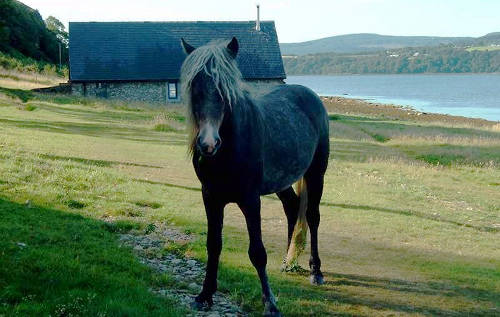
Build – Generous head, with deep jaw and tapering muzzle, sloped shoulder, high set neck, long ribcage, strong, lean legs with hard, sound feet.
Nature – Kind temperament with intelligence and and eagerness for friendship with their keepers.
Colors – Generally grey, but can be found in black and bay.
Origin – Ancestors of the native ponies of the Western Isles of Scotland. Very few have pure bloodlines due to mixed breeding, however there are a few heards remote enough to have been untouched by the blood of other breeds.
More information –Eriskay Pony
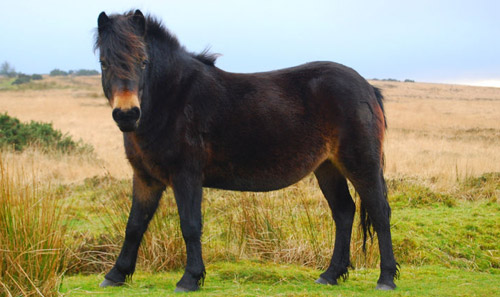
Build – Characteristic heavy upper brow developed over the years to protect the eyes from wind and hair growth that channels rain and snow from the body.
Nature – Athletic, adaptable and can carry great weight for their size, these ponies enjoy working and love to jump.
Colors – Always black bay with a mealy gene.
Origin – Oldest and purest of Britain’s native ponies and believed to descendants of horses that walked to Britain before it was an island.
More information – Exmoor Pony
